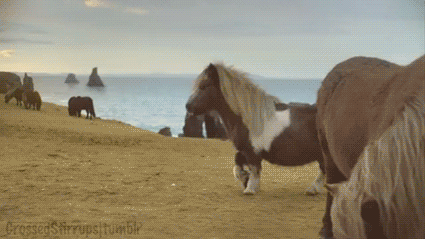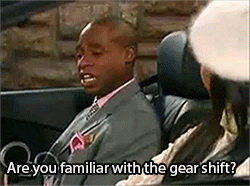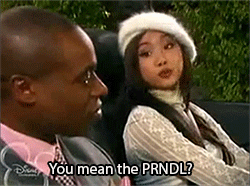Photo






A Maldives Beach Awash in Bioluminescent Phytoplankton Looks Like an Ocean of Stars
87K notes
·
View notes
Photo


Trick yourself into an out-of-body experience
Your mind isn’t as firmly anchored in your body as you think. Time for some sleight of hand
CLOSE your eyes and ask yourself: where am I? Not geographically, but existentially. Most of the time, we would say that we are inside our bodies. After all, we peer out at the world from a unique, first-person perspective within our heads – and we take it for granted.
We wouldn’t be so sanguine if we knew that this feeling of inhabiting a body is something the brain is constantly constructing. But the fact that we live inside our bodies doesn’t mean that our sense of self is confined to its borders – as these next examples show.
Sleight of (rubber) hand
By staging experiments that manipulate the senses, we can explore how the brain draws – and redraws – the contours of where our selves reside.
One of the simplest ways to see this in action is via an experiment that’s now part of neuroscience folklore: the rubber hand illusion. The set up is simple: a person’s hand is hidden from their view by a screen while a rubber hand is placed on the table in front of them. By stroking their hand while they see the rubber hand being stroked, you can make them feel that the fake hand is theirs (see diagram).
Why does this happen? The brain integrates various senses to create aspects of our bodily self. In the rubber hand illusion, the brain is processing touch, vision and proprioception – the internal sense of the relative location of our body parts. Given the conflicting information, the brain resolves it by taking ownership of the rubber hand.
The implication is that the boundaries of the self sketched out by the brain can easily expand to include a foreign object. And the self’s peculiar meanderings outside the body don’t end there.
Trading places
Ever wish you had someone else’s body? The brain can make it happen. To show how, Henrik Ehrsson at the Karolinska Institute in Stockholm, Sweden, and colleagues transported people out of their own bodies and into a life-size mannequin.
The mannequin had cameras for eyes, and whatever it was “seeing” was fed into a head-mounted display worn by a volunteer. In this case, the mannequin’s gaze was pointed down at its abdomen. When the researchers stroked the abdomens of both the volunteer and the mannequin at the same time, many identified with the mannequin’s body as if it was their own.
In 2011, the team repeated the experiment, but this time while monitoring the brain activity of volunteers lying in an fMRI scanner. They found that activity in certain areas of the frontal and parietal lobes correlated with the changing sense of body ownership.
So what’s happening? Studies of macaque monkeys show us that these brain regions contain neurons that integrate vision, touch and proprioception. Ehrsson thinks that in the human brain such neurons fire only when there are synchronous touches and visual sensations in the immediate space around the body, suggesting that they play a role in constructing our sense of body ownership. Mess with the information the brain receives, and you can mess with this feeling of body ownership.
Yet while Ehrsson’s study manipulated body ownership, the person “inside” the mannequin still had a first-person perspective – their self was still located within a body, even if it wasn’t their own. Could it be possible to wander somewhere where there is no body at all?
Into thin air
Your self even can be tricked into hovering in mid-air outside the body. In 2011, Olaf Blanke at the Swiss Federal Institute of Technology (EPFL) in Lausanne and colleagues asked volunteers to lie on their backs and via a headset watch a video of a person of similar appearance being stroked on the back. Meanwhile, a robotic arm installed within the bed stroked the volunteer’s back in the same way.
The experience that people described was significantly more immersive than simply watching a movie of someone else’s body. Volunteers felt they were floating above their own body, and a few experienced a particularly strange effect. Despite the fact that they were all lying facing upwards, some felt they were floating face down so they could watch their own back (see “Leaving the body”). “I was looking at my own body from above,” said one participant. “The perception of being apart from my own body was a bit weak but still there.”
“That was for us really exciting, because it gets really close to the classical out-of-body experience of looking down at your own body,” says team member Bigna Lenggenhager, now at the University of Bern in Switzerland. Further support came by repeating the experiment inside an MRI scanner, which showed a brain region called the temporoparietal junction (TPJ) behaving differently when people said they were drifting outside their bodies. This ties in neatly with previous studies of brain lesions in people who reported out-of-body experiences, which also implicated the TPJ.
The TPJ shares a common trait with other brain regions that researchers believe are associated with body illusions: it helps to integrate visual, tactile and proprioceptive senses with the signals from the inner ear that give us our sense of balance and spatial orientation. This provides more evidence that the brain’s ability to integrate various sensory stimuli plays a key role in locating the self in the body.
According to philosopher Thomas Metzinger of the Johannes Gutenberg University in Mainz, Germany, understanding how the brain performs this trick is the first step to understanding how the brain puts together our autobiographical self – the sense we have of ourselves as entities that exist from a remembered past to an imagined future. “These experiments are very telling, because they manipulate low-level dimensions of the self: self-location and self-identification,” he says. The feeling of owning and being in a body is perhaps the most basic facet of self-consciousness, and so could be the foundation on which more complex aspects of the self are built. The body, it seems, begets the self.
2K notes
·
View notes
Text

casual reminder that you’re not just my followers you’re my friends whether you like it or not that is what you signed up for when you hit the follow button
190K notes
·
View notes
Text
so i walked into my brother’s room he was asleep and i knocked something over and he said “if you’re a ghost or some shit please fuck off im too tired for this”
361K notes
·
View notes
































